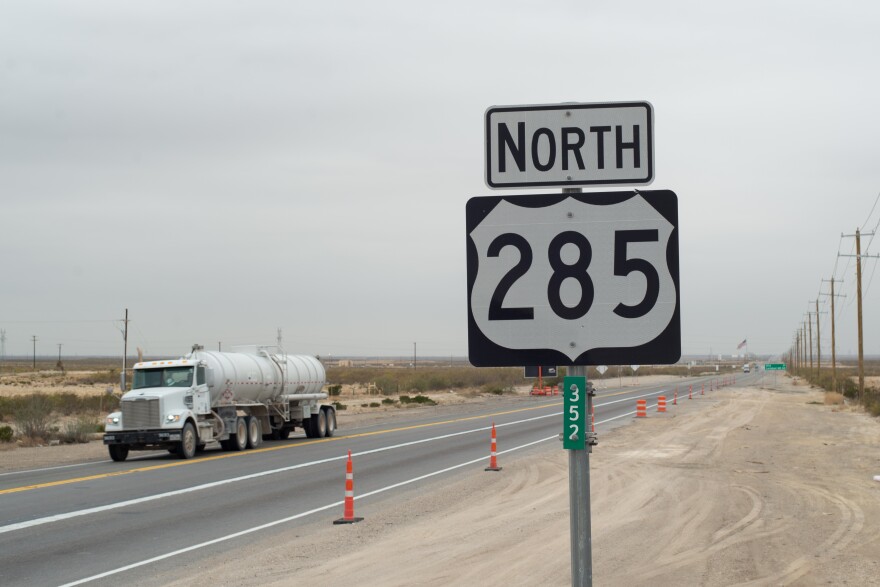Introduction: A Highway Built for Travel, Not Oilfield Traffic
U.S. Route 285 cuts through the heart of the West Texas oilfields, stretching across the booming Permian Basin and connecting towns like Pecos, Fort Stockton, Orla, and Carlsbad. What used to be a quiet, rural roadway has transformed into a high-risk corridor dominated by 18-wheelers, fracking trucks, sand haulers, water tankers, equipment convoys, and fatigued oilfield workers.
Locals, law enforcement, and first responders now call it what it has become:
“Death Highway.”
The dramatic increase in oil production has caused a surge in truck traffic far beyond what U.S. 285 was ever designed to handle. The result? Hundreds of severe and fatal crashes every year — many involving innocent drivers sharing the road with overloaded, speeding, and improperly maintained oilfield trucks.
For victims and families, the devastation is immediate — and often preventable.
Why U.S. Route 285 Became “Death Highway”
1. Oilfield Boom Overwhelming Rural Roads
U.S. 285 was never engineered to support thousands of heavy commercial trucks daily. With the Permian Basin producing millions of barrels of oil per day, truck traffic has skyrocketed, especially between Reeves, Ward, Loving, Winkler, Eddy, and Lea Counties.
A single fracking job can require:
- 1,000+ truck trips
- 4 million gallons of water
- Dozens of sand and chemical deliveries
Multiply that by hundreds of active wells, and the scale of traffic becomes clear.
2. Dangerous Road Design and Infrastructure Limits
Many stretches of U.S. 285:
- Are two-lane highways with no median
- Have narrow or no shoulders
- Offer limited lighting
- Feature sudden drop-offs, blind hills, and sharp curves
- Lack passing lanes and guardrails
- Have intersections with no warning signals
With overloaded 18-wheelers traveling at 70+ mph, recovery space is nearly zero.
3. Rural Emergency Response Delays
When crashes occur on remote stretches near Orla, Pecos, or Mentone, injured victims may wait:
- 30–60 minutes for EMS or law enforcement
- Longer for life-flight transport
- Hours for full accident reconstruction and cleanup
These delays often turn survivable crashes into fatal ones.
The Biggest Factors Behind Oilfield Truck Accidents on U.S. 285✅ Truck Driver Fatigue
Oilfield drivers often pull 14–18-hour shifts, shuttling sand, water, and equipment nonstop. Many companies incentivize speed over safety.
Common fatigue-related risks include:
- Slower reaction times
- Microsleep while driving
- Lane drifting
- Rear-end collisions
- Head-on crashes while passing
✅ Improper Maintenance and Overloaded Trucks
Oilfield trucks experience extreme wear and tear. When companies skip maintenance to stay on schedule, catastrophic failures follow:
- Brake failure
- Tire blowouts
- Axle breaks
- Steering loss
- Jackknife crashes
Overloaded trucks also need more braking distance and are harder to control.
✅ Speeding and Aggressive Driving
Drivers are often under pressure to make multiple delivery runs per shift. Passing on tight two-lane stretches, tailgating, and speeding are common.
✅ Unqualified or Poorly Trained Drivers
With a driver shortage across Texas oilfields, many employers rush hiring and skip full background checks or CDL verification.
✅ Blind Spots and Turning Collisions
Massive blind spots combined with long stopping distances often lead to:
- Side-swipes
- Underride collisions
- T-bone crashes at intersections
Fatality and Crash Statistics on U.S. 285
While exact numbers vary by county and reporting year, the Texas Department of Transportation and law enforcement consistently rank U.S. 285 among the deadliest highways in the state and nation.
Key statistics in recent years:
- Fatal and serious injury crashes have more than doubled since 2016
- Oilfield trucks account for a disproportionate share of fatalities
- Reeves, Loving, and Ward Counties repeatedly rank at the top for deadly rural crashes
- Carlsbad to Pecos is considered the most dangerous stretch
Some law enforcement officials refer to it as the “most lethal corridor in Texas.”
Who Can Be Held Liable After an Oilfield Truck Accident?
These crashes are rarely “accidents” — they are the result of negligence or improper safety practices. Multiple parties may be responsible:
1. Truck Driver
- Fatigue
- Speeding
- Failure to yield
- Distracted driving
2. Trucking Company / Oilfield Carrier
- Unrealistic delivery schedules
- Failure to maintain vehicles
- Unqualified driver hiring
- Violations of FMCSA regulations
3. Oil Companies / Well Operators
- Pressure to move loads rapidly
- Oversized or overloaded cargo
- Contracting unsafe operators
4. Contractors and Subcontractors
- Negligent dispatching
- Poor safety supervision
- Lack of training
5. Parts or Maintenance Providers
- Defective brakes, tires, or equipment
An experienced personal injury lawyer will investigate:
- Black box data
- Maintenance logs
- Driver logs and hours-of-service records
- Load manifests
- Hiring records
- Prior safety violations
What is being done about increasing safety on US-285?
Correcting this issue is not something that can be done quickly, but many are trying to improve safety conditions as fast as possible in the Permian Basin. This includes oil companies, some of which are planning on building new pipelines for oil transportation between 2019 and 2020. The government has labeled one part of US-285 a safety corridor, increasing traffic fines in hopes of discouraging bad driving habits. TxDOT is also allocating millions of dollars to help repair the highway.
Oil companies in the Permian Basin and around the country should also be focusing more on safety as the oil industry increases. Oilfield workers are not the only people in danger on Death Highway. Anyone who travels down the roadway could be at risk of serious injury or death.
If You Were Injured on U.S. 285, Legal Help Is Available
Oilfield trucking companies on U.S. Route 285 have teams of lawyers and insurers ready to protect their interests — injured victims deserve the same level of protection.
Call Houston Personal Injury Lawyer Karan Joshi at Orange Law
If you or a family member has been injured in a crash on U.S. Route 285 — whether as a driver, passenger, or oilfield worker — you have rights.
Attorney Karan Joshi and Orange Law represent victims of oilfield truck accidents throughout Texas. The firm fights to hold negligent trucking operators, oil companies, and contractors accountable for the harm they cause.When people are injured, they come to us for answers. They come to us for help. And we deliver because we believe in doing whatever it takes to ensure they can rebuild their lives after the worst accidents and injuries.



